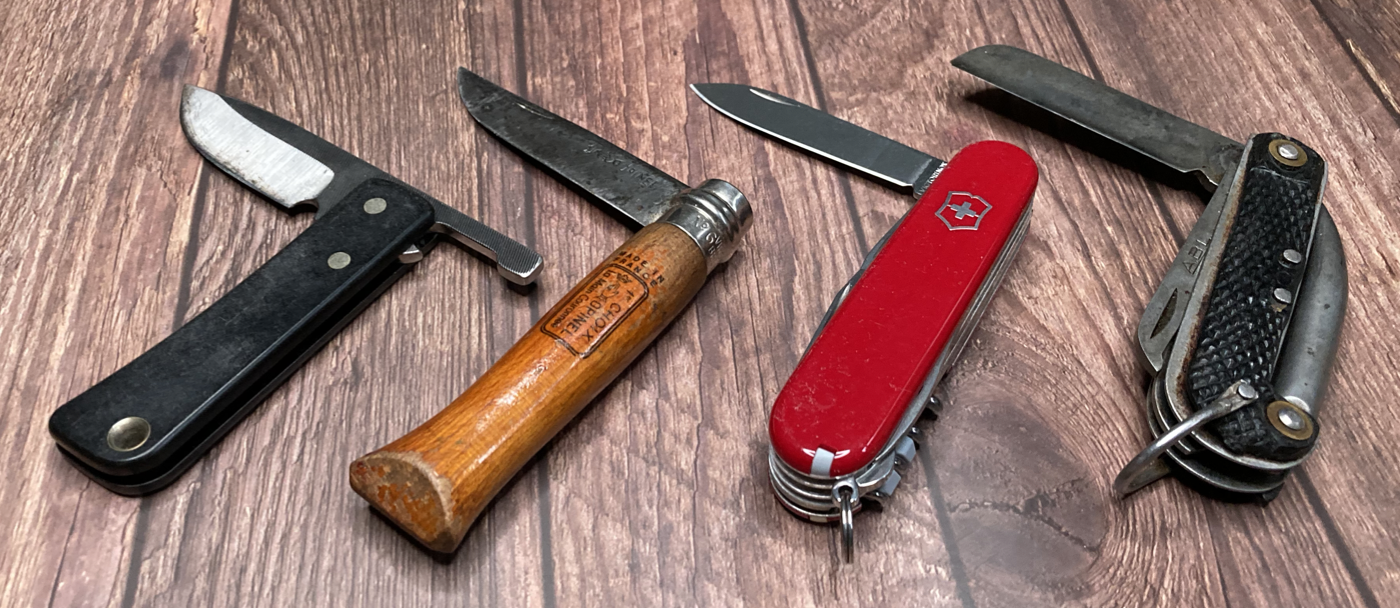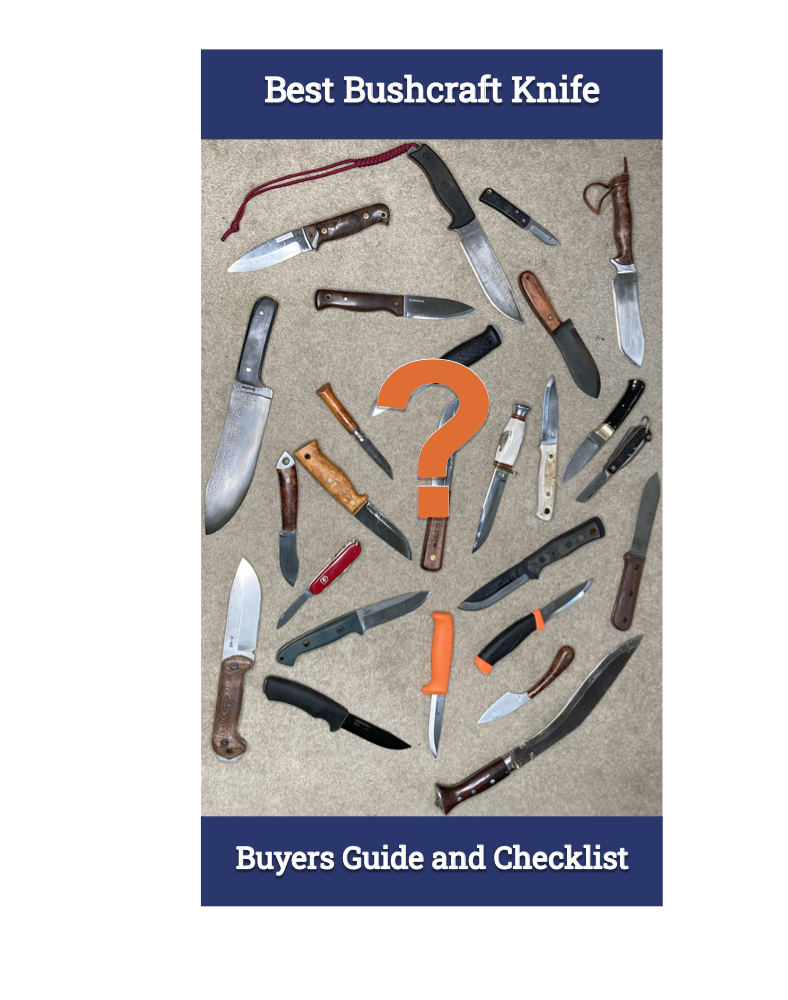Best Bushcraft Knife - Folding knives [FREE Buyers Guide]
Is a folding knife the best bushcraft knife for you?
Or perhaps you do not subscribe to the one tool to do everything philosophy and want to consider a little extra utility in your pocket? This was certainly the approach of our forefathers and was discussed in detail in this previous Journal entry:
Main types of folding knife that make the best bushcraft knife.
Folding knives suitable for bushcraft use fall into three main categories:
Friction Folders
Slip Joints
Locking knives
Friction Folders
Friction folders, these knives have a small extension behind the pivot point similar to a tang. When the blade is open this extension fits into a groove in the handle and the natural action of holding the handle keeps the blade ‘locked’ open.
The downsides of this style of knife are that when the blade is closed this extension sticks out and tends to snag in the pocket. Also, if you are using a less conventional grip to do detailed work the only thing stopping the blade pivoting is the friction of the joint. Hence the name friction folder.
This can make this style of pocket knife potentially dangerous to use if its limitations are not understood and taken into account.
A custom made friction folder made from a file with the ‘tang’ forming a handy bottle opener! I carried this knife in my pocket for a number of years because I loved the look of it and the utility of the bottle opener but to be honest I got fed up with digging into my leg and catching in my pocket.
Slip joint
A step up from the friction folder is the slip joint pocket knife. These knives have a spring along the spine of the handle that has features cut into it that interact with corresponding features machined onto the back of the blade pivot point. The spring adds additional friction through the joint when it is opened and closed (often at right angles as well) but has no true mechanical lock.
Whilst more secure than the friction folders, the joint is still designed to ‘break’ relatively easily, facilitating folding of the blade. Whilst this type of knife has a lower inherent potential to have the blade accidentally fold closed, it still has risks associated with it. I have carried and used slip joint pocket knives as my EDC (Every Day Carry) with no issues BUT I am only using the knife for tasks that are within its capabilities.
My current urban EDC is a Swiss Army knife. When used within their capabilities the functionality and utility of these knifes is amazing. Don’t fall into the trap of getting a model with loads of extra bells and whistles. Choose what’s important to you and buy a model that has those features and as little else as possible. I carry the Huntsman in the woods in my emergency kit. Outside of the blade, the key features I wanted were a small saw and scissors. This knife works for me.
Military Clasp knife. Whilst experimenting with bushcraft knives I carried this knife exclusively for a year doing courses and camp activities with only it. It handled many of the everyday tasks exceptionally well, especially slicing food and shaping wood with the edge. The utility of the built in fid and can opener was useful but not enough to offset the disadvantages. It was not very good at forming hollows and indeed I broke the tip putting a divot into a bow drill set. This is more a function of the blade shape than an issue with the steel. What finally let it down was the handle shape, it wasn’t comfortable to use for extended periods of time especially after the scale cracked and broke.
Locking knives
The final category of folding knives is the locking knife. The locks on these knives come in a number of different forms including a spine spring that also acts as a locking lever, a liner lock and external features that have to be engaged to lock the blade in position.
Whilst locking knives remove many of the issues highlighted with the previous two types of folding knives, they do have a number of draw backs.
Firstly, in a lot of countries they are illegal to carry publicly without specific justifiable reason. It’s your responsibility as a knife owner to understand and abide by the laws of your jurisdiction.
Secondly, because they are more robust, the presence of the lock itself lulls people into a false sense of security, which often translates into doing things with this type of knife that you wouldn’t be tempted to do with either of the others. Whilst it is rare, I have seen the lock on folding knives fail, usually by ‘bouncing’ out of engagement by being used to chop or baton. This of course is potentially very dangerous and can lead to some nasty cuts.
Opinel No8. I love these French made knives! The quality of the steel is exceptional, they are easy to get a hair popping edge on them and the edge stays sharp for ages. They have a cunning metal ring built into the handle that can be twisted to lock the blade in position. Unfortunately, in the area I live these knives are now illegal to carry daily without a very specific purpose.
Summarising folding knives as the best bushcraft knife
So summarising folding knifes in the context of the best bushcraft knife, in my opinion, whilst they certainly have their place when treated with respect and used appropriately, they are not however, a one stop shop. I certainly wouldn’t be taking a folding knife with me into the wilderness as my ‘only knife’ that I had to rely on exclusively. Compared to a good quality fixed knife blade they lack robustness and have the potential to be dangerous.


![Can our ancestors and forefathers help us determine what makes the best bushcraft knife? [Free buyers guide]](https://images.squarespace-cdn.com/content/v1/5fb161311ca05f08cb554748/1605972657078-W8HGG2X7WE9BPOC482YS/best+bushcraft+knife+stone+and+bone.png)









